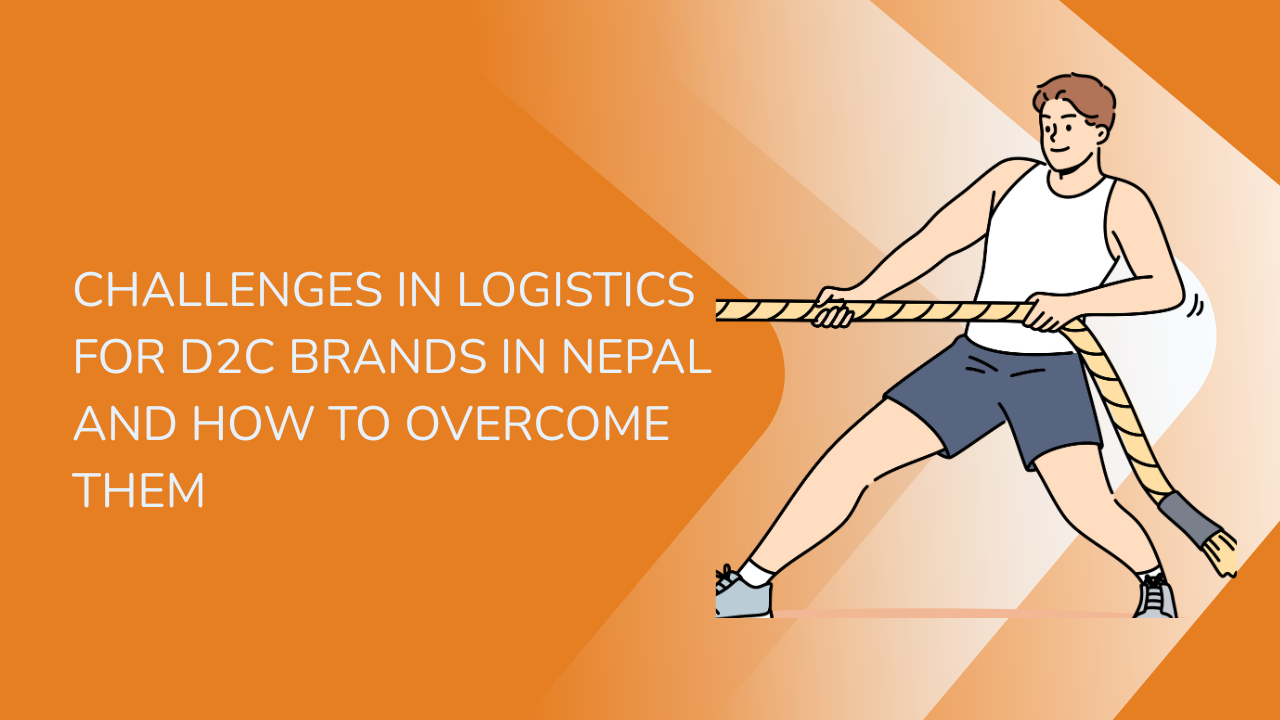Share this Article
E-commerce in Nepal has evolved significantly in recent years, and with the rapid digital transformation happening in 2025, business owners must keep up with emerging trends to stay competitive . As internet access improves and mobile phone usage continues to rise, the way Nepali consumers shop is shifting. In this article, we explore the top e-commerce trends for 2025, specifically tailored for the Nepali market, to help business owners adapt, innovate, and capture new opportunities.
1. Artificial Intelligence (AI) and Automation: Revolutionizing Personalization in Nepal
In 2025, Artificial Intelligence (AI) is set to play a central role in reshaping the e-commerce experience in Nepal. AI-powered solutions are becoming more accessible and affordable for Nepali businesses, enabling them to offer personalized shopping experiences that can drive customer loyalty and increase sales. AI can be used to analyze consumer data, predict buying patterns, and recommend products based on past interactions.
Businesses in Nepal are also leveraging AI to streamline operations such as inventory management, order fulfillment, and customer service. Automation tools like chatbots are increasingly popular in Nepali e-commerce, helping businesses provide 24/7 support and instantly respond to customer inquiries. This shift will continue in 2025, with businesses leveraging AI to make smarter decisions and improve the efficiency of their operations, providing better service to the growing number of online shoppers in Nepal.
2. Mobile Commerce (M-Commerce): Dominating the Nepali Market
With over 75% of internet users in Nepal accessing the web via smartphones, mobile commerce (m-commerce) is a significant force in the Nepali e-commerce ecosystem. As of 2025, mobile phones will continue to be the primary tool for shopping, and businesses must ensure that their websites and apps are optimized for mobile use.
For Nepali consumers, mobile commerce offers convenience, especially with mobile payment solutions like eSewa, Khalti, and IME Pay gaining popularity. These platforms are tailored to local preferences and provide easy, secure payment methods for Nepali consumers. Businesses that integrate these mobile payment solutions can attract a wider audience, as consumers feel more comfortable using local services for transactions.
Additionally, businesses should focus on enhancing the mobile shopping experience by streamlining the checkout process and ensuring that websites load quickly and are easy to navigate on smaller screens. As mobile usage continues to increase, adopting a mobile-first strategy will be critical for success in 2025.
3. Social Commerce: Leveraging Social Media for Direct Sales in Nepal
Social commerce is gaining momentum in Nepal, and by 2025, it will be an essential component of the e-commerce landscape. Platforms like Facebook, Instagram, and TikTok are already popular in Nepal, and they offer direct shopping capabilities that businesses should tap into.
Nepali consumers are increasingly discovering products through social media influencers, user-generated content, and brand pages. Social commerce allows businesses to integrate shopping features directly into social media platforms, making it easier for users to purchase products without leaving the app. For instance, Nepali clothing brands, beauty products, and local handicrafts can reach a wider audience by showcasing their products on Instagram or Facebook, where users can directly click to purchase.
The influence of social media on purchasing decisions cannot be overstated. As more Nepali consumers spend time on these platforms, businesses need to develop strategies that combine engaging content with seamless shopping experiences. Social commerce will continue to grow in Nepal as local businesses leverage these platforms to enhance brand visibility and drive sales.
4. Voice Commerce: The Next Frontier in Nepal’s E-commerce
Voice-activated devices like Amazon Alexa, Google Assistant, and Apple’s Siri have become part of everyday life in many parts of the world, and Nepal is no exception. As voice search becomes more integrated into the e-commerce experience, businesses in Nepal should start preparing for the rise of voice commerce.
In 2025, voice commerce will begin to take off in Nepal, particularly among tech-savvy consumers. With smartphones and smart speakers being increasingly popular, Nepali consumers will start using voice commands to search for products, ask about discounts, and even place orders. For example, a customer may ask, "Order rice from my favorite store" or "Find the latest smartphone deals."
To take advantage of this trend, Nepali businesses must optimize their content for voice search by using natural, conversational language and ensuring that their product listings are easily accessible through voice assistants. Offering voice-enabled shopping experiences will provide customers with greater convenience and can differentiate your business from competitors.
5. Subscription-Based Models: Catering to Nepali Consumers’ Convenience
Subscription services have found a foothold in Nepal in recent years, and in 2025, this model is expected to grow even more. Whether it's for products like health supplements, beauty products, groceries, or entertainment, Nepali consumers are increasingly turning to subscription services for convenience and flexibility.
Subscription models are particularly attractive to Nepali customers who seek hassle-free, regular deliveries. For example, food delivery services, book clubs, or even home essentials could offer subscription-based options that give customers access to their favorite products at regular intervals. This not only builds customer loyalty but also provides businesses with a predictable revenue stream.
As more businesses in Nepal embrace this model, they will need to focus on offering flexibility, personalized plans, and great value. Subscription services that allow for easy customization and offer benefits such as discounts, free delivery, or exclusive offers will resonate strongly with consumers in 2025.
6. Augmented Reality (AR): Enhancing the Online Shopping Experience in Nepal
Although still emerging, Augmented Reality (AR) has the potential to transform e-commerce in Nepal. In 2025, more Nepali businesses will likely integrate AR into their online stores to enhance the shopping experience. With AR, consumers can virtually try on clothes, see how furniture would look in their home, or visualize how a new makeup product will appear on their skin.
For Nepali e-commerce businesses, this technology can be a game-changer, especially for industries like fashion, furniture, and beauty. AR helps bridge the gap between online shopping and in-store experiences, offering customers the confidence to make purchases without physically trying or testing the products.
Though AR adoption in Nepal is still in its early stages, the increasing availability of affordable smartphones with AR capabilities means that more consumers will be able to access and benefit from these features. By 2025, businesses offering AR-powered features could gain a competitive edge by providing a more engaging and immersive shopping experience.
7. Sustainability and Ethical Shopping: Meeting the Demand for Eco-Friendly Products
As awareness of environmental issues grows, Nepali consumers are becoming more conscientious about their purchases. By 2025, sustainability will become an even more important factor in the buying decisions of Nepali shoppers. Nepali businesses can benefit from adopting more sustainable practices and offering eco-friendly products to cater to this demand.
From using biodegradable packaging to sourcing products from local and sustainable suppliers, Nepali businesses can align themselves with the values of environmentally-conscious consumers. Brands that are transparent about their sustainability efforts and that promote ethical production processes will be well-positioned to build trust and attract a loyal customer base.
Moreover, with Nepal’s growing tourism industry, international visitors may also be looking for sustainable products, making eco-friendly goods an attractive market segment for local businesses.
8. Buy Now, Pay Later (BNPL): Flexibility in Payments for Nepali Consumers
Buy Now, Pay Later (BNPL) services have gained significant traction worldwide, and Nepal is starting to see the adoption of this flexible payment method. With financial inclusivity becoming a priority for Nepali consumers, BNPL services like Khalti Pay, eSewa, and IME Pay are helping to make products more accessible.
For businesses, integrating BNPL options provides a way to increase conversion rates, as customers can make larger purchases without worrying about immediate payments. In 2025, offering BNPL services will become a key competitive advantage for Nepali e-commerce platforms, especially for high-ticket items like electronics or home appliances.
9. Hyperlocal E-commerce: Fulfilling the Demand for Speedy Deliveries
As the Nepali e-commerce market matures, the demand for hyperlocal delivery solutions will continue to rise in 2025. Consumers are increasingly seeking faster, same-day delivery options, particularly in urban areas like Kathmandu, Pokhara, and Lalitpur. Hyperlocal delivery services allow businesses to fulfill orders more efficiently and meet customers’ growing expectations for speed.
By leveraging local warehouses, businesses can reduce delivery times and costs while offering a more personalized experience to customers. For Nepali e-commerce businesses, this means offering options like click-and-collect, where customers can pick up their orders from a nearby store or warehouse, or same-day delivery services for local customers.
10. Omnichannel Retailing: A Seamless Experience Across Platforms
In 2025, Nepali businesses must adopt an omnichannel strategy to meet the expectations of modern consumers. Omnichannel retailing integrates both online and offline experiences, allowing customers to browse products online, make in-store purchases, and even return items across multiple platforms.
For Nepali businesses, offering options like online ordering with in-store pickup or easy returns for online purchases at physical stores can improve customer satisfaction and drive sales. By providing a seamless shopping journey across all channels, businesses can build long-lasting relationships with customers and create a competitive edge in the market.
Conclusion: Preparing for the Future of E-commerce in Nepal
As the e-commerce landscape in Nepal continues to evolve, business owners must adapt to the latest trends to stay competitive. From leveraging AI and automation to offering mobile-first experiences, integrating social commerce, and embracing sustainability, the future of e-commerce in Nepal is bright.
For businesses ready to take advantage of these trends in 2025, Saauzi provides an all-in-one platform that can help you manage your e-commerce store and stay ahead of the curve in this rapidly changing environment. Stay ahead of the trends, optimize your digital presence, and create exceptional customer experiences to thrive in the Nepali e-commerce market.
Categories:
Marketing & Growth
Tags:
Global E-commerce
,
Nepali businesses
,
reviews and ratings
,
Dropshipping
,
picture







